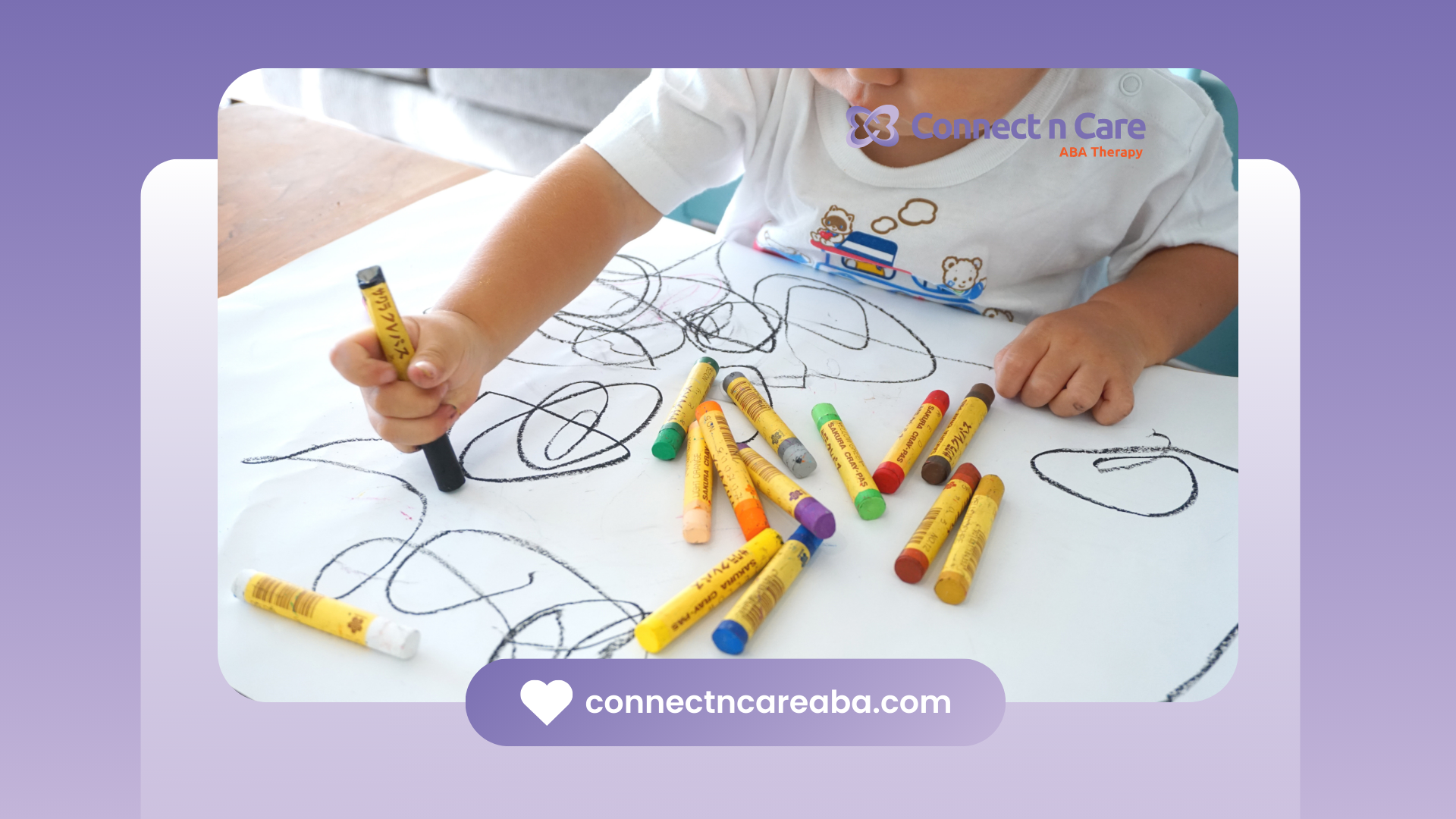If you are a parent or caregiver for a child with autism, finding effective strategies is crucial. One powerful tool in Applied Behavior Analysis (ABA) is Noncontingent Reinforcement (NCR). This approach helps manage unique challenges by reducing your child’s motivation to engage in problem behavior. Instead of reacting to actions, NCR focuses on proactive support, creating a positive environment where your child can thrive. It’s a gentle yet effective way to encourage positive behavioral shifts.
What Is Noncontingent Reinforcement in Autism?
So, what is noncontingent reinforcement, and how is it used for children on the autism spectrum? In simple terms, it's a behavior analysis technique where a child receives positive reinforcement on a fixed schedule, not because they performed a specific action. The reward is delivered regardless of what your child is doing at that moment.
The goal is to provide reinforcement so freely that your child no longer feels the need to use challenging behaviors to get attention or items they want. This proactive approach helps create a more predictable and supportive world for them.
Defining Noncontingent Reinforcement
Noncontingent reinforcement is defined by the delivery of reinforcers on a time-based schedule, completely independent of your child's actions. This means your child gets continuous access to something they enjoy at predetermined intervals, whether or not a specific behavior has occurred. The core idea is to enrich their environment so the motivation to engage in problematic behaviors decreases.
For example, an NCR procedure might involve giving your child praise or a favorite toy every five minutes. This consistent access to rewards reduces the need for them to use challenging behaviors to get attention or the items they want. The reward is not earned; it is simply given.
The role of this strategy is to proactively meet a child's needs. By providing what they desire on a regular schedule, you reduce the reasons they might act out to get it. This focus on prevention is what makes NCR a valuable tool for supporting children with autism.
Core Principles of NCR for Children with Autism
The foundation of noncontingent reinforcement rests on a few key principles. By providing consistent access to reinforcers, you can create a positive environment where your child feels supported. This proactive approach helps minimize the drive to use difficult behaviors to communicate needs. NCR procedures are built around a set schedule rather than a reaction to a specific behavior.
This is a fundamental shift from many other behavioral strategies. The primary principles include:
- Time-Based Delivery: Reinforcement is given based on the passage of time, not as a reward for a good deed.
- Function-Based Reinforcers: The reinforcer chosen should match the function of the problem behavior, such as providing attention for attention-seeking behavior.
- Schedule Fading: Over time, noncontingent reinforcement schedules are gradually thinned out as your child's behavior improves.
By following these principles, you can effectively modify the environment to promote positive outcomes. The goal is to make reinforcement so readily available that your child no longer needs to resort to challenging behaviors.
How Noncontingent Reinforcement Fits into ABA Therapy
Noncontingent reinforcement plays a significant role in Applied Behavior Analysis (ABA), particularly for children with autism. ABA focuses on observing and analyzing behavior to bring about positive changes. When NCR is incorporated, it provides a method of delivering positive reinforcement that is free from the usual requirement of performing a specific action first.
This strategy helps improve behavior by reducing a child's motivation to engage in challenging acts. It can help decrease or eliminate certain behaviors, especially those that are attention-seeking, by providing continuous access to reinforcement.
Within an ABA framework, NCR is a tool for behavior modification. For example, therapists may use it to increase task completion by providing scheduled praise during homework time, which reduces attempts to avoid the task. This makes the learning process smoother and more positive for your child.
Why Use Noncontingent Reinforcement in Autism Treatment?
Noncontingent reinforcement is a key strategy in autism treatment because it offers a gentle and effective way to reduce problem behavior. Instead of waiting for a challenging behavior to occur and then reacting, NCR gets ahead of it. By providing regular, unsolicited positive reinforcement, you can decrease your child’s motivation to act out.
This proactive approach fosters a supportive environment where positive behavior is more likely to occur naturally. The focus of behavior analysis shifts from correction to connection, which can lead to wonderful outcomes for both your child and your family. In the next sections, we'll explore how NCR achieves this and the specific benefits it offers.
Benefits of Noncontingent Reinforcement for Behavior Support
One of the greatest benefits of using noncontingent reinforcement is the positive behavior change it brings to daily life. For families, this strategy can significantly improve the overall quality of life by reducing stress and creating a more harmonious home. When negative behaviors decrease, it opens up more opportunities for positive connections.
This approach is also highly practical for educators. It is a low-effort procedure that can be implemented with high fidelity even in busy group settings. This makes it an accessible tool for promoting better behavior in different environments.
The common benefits you can expect include:
- Strengthened family bonds through more positive interactions.
- Improved focus and task completion in children.
- A reduction in a child's challenging behaviors.
- An easier implementation process compared to other interventions. By focusing on prevention, NCR helps build a foundation of trust and security, creating a supportive environment for everyone.
Promoting Positive Interactions and Reducing Challenging Behaviors
NCR supports positive behavior changes by breaking the connection between a challenging behavior and the reward it typically produces. If a child learns that they will receive attention or a desired item on a regular schedule, they no longer need to use disruptive actions to get it. This is different from negative reinforcement, which involves removing something unpleasant.
This method works by reducing the motivation for the challenging behavior and providing consistent access to desired reinforcers. It strengthens the relationship between the child and caregiver through positive interactions, rather than corrective ones.
Ultimately, NCR creates an environment where positive behaviors can flourish without the pressure of earning a reward. By providing reinforcement freely, it reduces a child's motivation to use adverse actions to get what they want or need, leading to significant positive behavior changes.
Expected Outcomes from NCR in Applied Settings
The effectiveness of noncontingent reinforcement is well-documented, with research showing it is a powerful tool for reducing problem behavior and encouraging positive behavior change. By delivering reinforcement on a schedule, NCR helps create a predictable and safe environment, which can lead to lasting positive outcomes.
Studies have demonstrated clear benefits in various situations. For example, providing continuous access to a preferred movie helped reduce escape-motivated behavior in a young girl with autism. Another study found that the noncontingent delivery of a preferred food item effectively reduced problem behaviors and increased compliance.
These results confirm that NCR is a valuable, evidence-based practice. Expected outcomes include a noticeable decrease in the rate of problem behaviors and an increase in compliance in demand situations, all without using more intensive procedures.
Contingent vs. Noncontingent Reinforcement in Autism Therapy
In Applied Behavior Analysis (ABA), there are different types of reinforcement used to support behavior change. Two common approaches are noncontingent reinforcement and contingent reinforcement. While both aim to encourage positive behaviors, they work in fundamentally different ways based on when the reward is delivered.
Contingent reinforcement is an "if-then" system: if you perform a specific action, then you get a reward. Noncontingent reinforcement, on the other hand, provides the reward based on time, with no behavioral strings attached. Let’s look closer at how these methods differ in practice and their effects.
Key Differences and Definitions
The primary difference between these two approaches lies in their implementation. Contingent reinforcement requires a person to perform a specific behavior to earn a reward. For example, your child must complete their homework before they can watch TV. The reinforcement is directly dependent on their action.
In contrast, noncontingent reinforcement follows a set schedule of reinforcement that is not tied to any behavior. Your child might get five minutes of tablet time every 10 minutes, regardless of what they are doing. This removes the need to engage in any particular behavior to access the reinforcer.
Here is a simple breakdown of the differences:
| Feature | Contingent Reinforcement | Non-Contingent Reinforcement |
|---|---|---|
| Dependency | Depends on performing a specific behavior | Does not depend on behavior |
| Timing | Reinforcement is given after the behavior occurs | Reinforcement is given on a set time schedule |
Practical Implications for ABA Programs
In practical terms, the distinction between contingent and noncontingent reinforcement guides how ABA therapists and other staff members design interventions. Contingent reinforcement is excellent for teaching new skills, as it clearly links a desired action with a positive outcome. However, it can be less effective for decreasing an existing problem behavior if the child is not performing the desired replacement action.
Noncontingent reinforcement is often preferred for reducing challenging behaviors. Since the reward is provided freely, it saturates the environment with reinforcement, making the problem behavior less necessary. This makes it a highly practical tool in group settings like classrooms, where one-on-one attention for contingent rewards may be limited.
To ensure high fidelity, ABA programs often train parents and teachers to:
- Identify the function of a behavior.
- Choose a matching reinforcer.
- Implement the time-based schedule consistently.
When to Choose NCR Over Other Approaches
The decision to use NCR often comes after a functional analysis, which helps determine why a challenging behavior is happening. If the behavior is maintained by a need for attention, escape, or access to an item, NCR can be an ideal choice. It proactively provides that reinforcer, reducing the child's need to act out.
NCR is particularly useful when a child has a low rate of compliance or when the goal is to create a more positive learning environment without constant demands or corrective feedback. For instance, if a child frequently displays attention-seeking behaviors, providing scheduled, positive attention through NCR can be more effective than waiting for the behavior to occur and then reacting.
The use of NCR is also beneficial when you want to reduce a problem behavior quickly without resorting to more intensive procedures. By making the environment itself reinforcing, you can foster a sense of safety and support, which encourages positive interactions.
Strategies for Implementing Noncontingent Reinforcement
Implementing noncontingent reinforcement effectively involves careful planning and consistency. The core of these NCR strategies involves creating a schedule for delivering rewards that is not tied to any specific behavior your child performs. The implementation of NCR is often a collaborative process between therapists, parents, and teachers.
This ensures that the NCR procedures are applied consistently across different settings, which is crucial for success. The next few sections will cover how to schedule interventions, select the right reinforcers, and customize the approach to meet your child's unique needs.
Scheduling and Timing NCR Interventions
A key part of using NCR is the careful scheduling and delivery of reinforcers. Therapists often start with a "rich" schedule of reinforcement, where the noncontingent delivery happens frequently at set intervals. This helps your child quickly learn that they have free access to what they desire without having to engage in problem behaviors.
The initial schedule is often based on data that identifies how often the problem behavior typically occurs. The goal is to provide the reinforcer more frequently than the behavior happens. Over time, as your child's behavior improves, the noncontingent reinforcement schedules can be gradually "leaned out," meaning the time between reinforcements gets longer.
The process typically involves these steps:
- Identifying a powerful reinforcer for your child.
- Establishing a baseline time-based schedule for the delivery of reinforcers.
- Systematically increasing the time between reinforcements as target behaviors decrease.
Selecting Appropriate Reinforcers for Autistic Individuals
Choosing the right reinforcer is crucial for the success of NCR. The reinforcer should be something your child genuinely enjoys and is motivated by. A functional analysis can help identify the "why" behind a behavior, which in turn helps in selecting a reinforcer that directly meets that need. For example, if a behavior is attention-seeking, the reinforcer should be positive attention.
Examples of reinforcers can vary widely. It could be verbal praise, access to a favorite toy, or watching a clip from a preferred movie. In some cases, the noncontingent delivery of an edible item, like a small snack, has been shown to be effective in reducing problem behaviors.
The key is to observe your child and see what they gravitate towards. What do they ask for? What do they try to get when they are acting out? The answers to these questions can point you toward powerful reinforcers that will make the NCR strategy successful.
Customizing NCR Techniques for Unique Needs
NCR is not a one-size-fits-all solution. A critical part of making it work is adapting the strategies to fit the individual needs of your child. What works for one child in a home environment may need to be adjusted for another child in a busy educational setting or other group settings.
Adaptation involves considering the specific function of the behavior, your child's preferences, and the practicalities of the environment. For example, if a behavior is maintained by a desire to escape from tasks, the therapist might schedule frequent, short breaks as a noncontingent reinforcer. For a child seeking sensory input, the reinforcer might be access to a sensory toy.
This customization is essential for achieving positive outcomes. Therapists and parents should continuously monitor progress and make adjustments to the type of reinforcer or the schedule across various settings. This flexibility ensures the intervention remains effective and meaningful.
Examples of Noncontingent Reinforcement in Autism Interventions
So, what do examples of noncontingent reinforcement look like in everyday life? The NCR strategies are often simple and easy to integrate into your routine. These types of reinforcement are designed to be practical, whether you are at home, in the community, or at school, and can be a powerful tool for behavior change.
The key is to provide reinforcement proactively. This could mean offering praise, a favorite snack, or a few minutes of quality time on a schedule. Let’s explore some specific examples in different environments.
NCR in School and Classroom Settings
In an educational setting, NCR can be a game-changer for managing behaviors in group settings. Teachers and other staff members can use these NCR procedures to create a more positive and productive classroom for everyone, promoting better student success.
A classic example is managing attention-seeking behavior. If a student frequently calls out during class, the teacher might provide a steady stream of low-level positive attention (the reinforcer) on a schedule. This reduces the student’s need to be disruptive to get noticed.
Here are a few more examples for school environments:
- Scheduled Praise: A teacher provides specific praise to a student every five minutes, regardless of their current activity.
- Access to Materials: A student who often grabs items might be given their own set of preferred sensory tools to hold.
- Movement Breaks: For a student who needs to move, a teacher can schedule short "stretch breaks" every 15 minutes.
Using NCR at Home With Family
At home, noncontingent reinforcement can be a wonderful way to strengthen family bonds while addressing challenging behaviors. Instead of interactions revolving around correction, NCR allows for more positive, proactive engagement in home settings. These strategies can be seamlessly woven into daily routines.
For instance, a parent could schedule 10 minutes of dedicated quality time with their child right before bedtime. This consistent attention can help prevent challenging bedtime behaviors that may stem from a desire for connection. This simple act can improve focus and strengthen family bonds.
You could also provide your child with their favorite snack every 20 minutes while they are doing homework to reduce escape-related behaviors. The idea is to anticipate their needs and meet them before a problem behavior occurs, making daily routines smoother for everyone.
Applying NCR in Community-Based Activities
NCR is also highly effective during community-based activities, which can sometimes be stressful for children with autism. Using NCR in these group settings can improve the overall quality of the experience for both you and your child, making outings more enjoyable.
Imagine you are at the grocery store. You could offer your child a small toy or sticker at set intervals—say, every five minutes that they are in the cart. This proactive reward keeps the experience positive and can reduce the likelihood of a meltdown.
The same principle applies to other activities like going to the park or a restaurant. By providing reinforcement on a schedule, you help your child feel secure and supported, even in unfamiliar environments. This makes it easier for them to participate successfully in community life.
Measuring the Effectiveness of NCR in Autism
How do you know if the noncontingent reinforcement is working? Measuring the effectiveness of NCR is a crucial step in the process. This is done through careful observation and data collection, which are components of behavior analysis. The goal is to see a clear reduction in challenging behaviors over time.
By tracking progress, therapists and parents can make informed decisions about the interventions. This might include adjusting the reinforcement schedule or changing the reinforcer itself to ensure the best possible outcomes. The following sections explain how this measurement is done.
Data Collection and Tracking Behavioral Improvements
To measure the effectiveness of NCR, professionals rely on systematic data collection. This process involves tracking behavioral improvements by recording how often the problem behavior occurs before and after the NCR intervention is introduced. The goal is to see a decrease in the rate of problem behavior.
This data provides objective evidence of whether the strategy is working. It removes guesswork and allows for precise adjustments. For example, if the data shows no change, the therapist might re-evaluate the function of the behavior or the power of the chosen reinforcer.
Common methods for data collection include:
- Frequency counts (how many times a behavior occurs).
- Duration recording (how long a behavior lasts).
- Interval recording (whether a behavior occurs during a specific time block). This information is then graphed to visually represent the change over time.
Evaluating NCR Across Different Ages and Severity Levels
Noncontingent reinforcement is a flexible strategy that can be effective for individuals across the autism spectrum disorder, regardless of age or severity levels. Its effectiveness lies in its ability to be customized to the unique needs of each person. The underlying principle of proactively meeting a need works for a young child as well as a teenager.
For individuals with more significant needs, NCR can be a foundational strategy to reduce severe problem behaviors, creating a safer environment for learning other skills like functional communication training. For those with milder symptoms, it can be a gentle way to improve social interactions and reduce anxiety in various settings.
The key to the effectiveness of NCR is the careful selection of reinforcers and the consistent application of the schedule. When tailored correctly, this approach can produce positive outcomes for a wide range of individuals on the spectrum.
Conclusion
In summary, understanding and implementing Noncontingent Reinforcement (NCR) can be a game-changer in supporting children with autism. By providing reinforcement independently of specific behaviors, NCR fosters positive interactions, reduces challenging behaviors, and enhances overall well-being. It's essential to tailor your strategies to meet the unique needs of each individual, whether at home, in school, or within the community. As you explore the benefits of NCR, remember that consistency and careful measurement of effectiveness are key to success. If you're ready to make a positive impact in the life of a child with autism, we invite you to book a free consultation with our experts and discover how NCR can transform your approach to behavior support.
At Connect n Care ABA, we use strategies like noncontingent reinforcement (NCR) to create calmer, more supportive environments where children can learn and thrive. Our team focuses on providing consistent, meaningful reinforcement that helps reduce challenging behaviors and build a stronger foundation for growth. By understanding each child’s needs and offering positive support before difficulties arise, we make learning more comfortable, predictable, and empowering. At Connect n Care ABA, we don’t just manage behaviors—we help children feel secure, confident, and ready to succeed.
FAQs
Are there any drawbacks or limitations to using noncontingent reinforcement?
While generally safe, noncontingent reinforcement carries a small risk of "incidental reinforcement," where a reward is accidentally delivered at the same moment a problem behavior occurs. A thorough behavior analysis beforehand can help minimize this risk and ensure the effectiveness of NCR for reducing adverse behaviors or negative behaviors.
What tips should parents follow when using NCR at home?
When using NCR in home settings, be consistent with your schedule and choose reinforcers your child truly loves. Weave the NCR procedures into daily routines to strengthen family bonds. The goal is to create a supportive environment where your child feels understood, reducing the need for challenging behaviors.
Can NCR strategies be combined with other autism interventions?
Absolutely. In applied behavior analysis, NCR strategies are often combined with other interventions for the autism spectrum, such as functional communication training or differential reinforcement. This combined approach can enhance positive outcomes by both preventing problem behaviors and teaching new, appropriate skills at the same time.
Sources:
- https://www.autismspeaks.org/applied-behavior-analysis
- https://autismhub.education.qld.gov.au/resources/functional-behaviour-assessment-tool/non-contingent-reinforcement
- https://www.psychiatry.org/patients-families/autism/what-is-autism-spectrum-disorder









